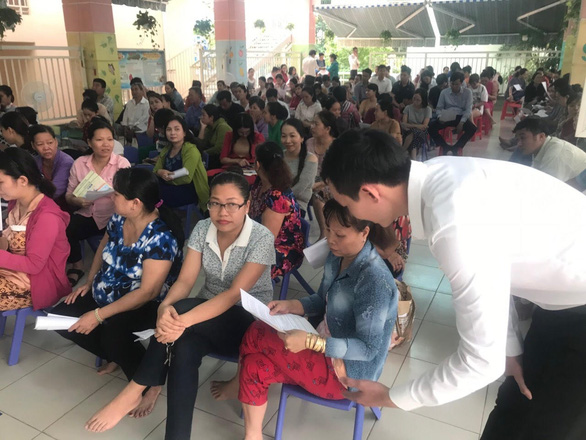 Society
Society

HCM City’s education and training sector plans to embrace electronic payments at the kindergarten, primary, secondary and high school education levels by 2022.

|
| Parents are given instructions on how to to use cashless payments. — Photo tuoitre.vn |
HCM CITY — HCM City’s education and training sector plans to embrace electronic payments at the kindergarten, primary, secondary and high school education levels by 2022.
Hoàng Kim Sơn, principal of Hà Huy Giáp Primary School in District 12, said cashless payment methods such as internet banking and cards would be essential to increase operational efficiency and transparency for school fee payments.
It would also help reduce cash handling costs and associated risks.
The school plans to recruit 3,300 students in the 2020-21 academic year.
An average of 200 parents are expected to visit the school to pay school fees for their children daily over a period of 15 days.
The school has switched to electronic payments to reduce the work overload for accountants and reduce the risk of money losses.
However, the habit of using cash persists among many parents.
More than 40 per cent of students are from families with temporary residency in HCM City and their access to electronic payment technologies is limited, according to the principal.
Võ Phương Bình, principal of Ngô Quyền High School, said that many parents paid school fees in cash despite the availability of electronic payment methods that are accepted at the school.
In the 2020-21 academic year, more than 1.7 million students will attend kindergarten, primary, secondary and high schools.
School fee payments worth dozens of trillions of đồng will be collected every month, making it an urgent need for schools to adopt electronic payment methods, according to the city’s Department of Education and Training.
In 2014, the city’s People’s Committee assigned the city’s Department of Education and Training to work with the State Bank of Việt Nam’s HCM City branch to develop infrastructure for electronic payments and diversify payment services.
As of the end of 2019-20 academic year, only nine out of 24 districts in the city had adopted electronic payment methods, including Bình Tân, Tân Bình, Bình Chánh, Nhà Bè, Củ Chi, 6, 7, 9, and 10, according to a report of the Department of Education and Training.
More than 90 per cent of high schools use cashless payment methods, while the number of kindergartens and primary and secondary schools using electronic payment remains modest. — VNS




